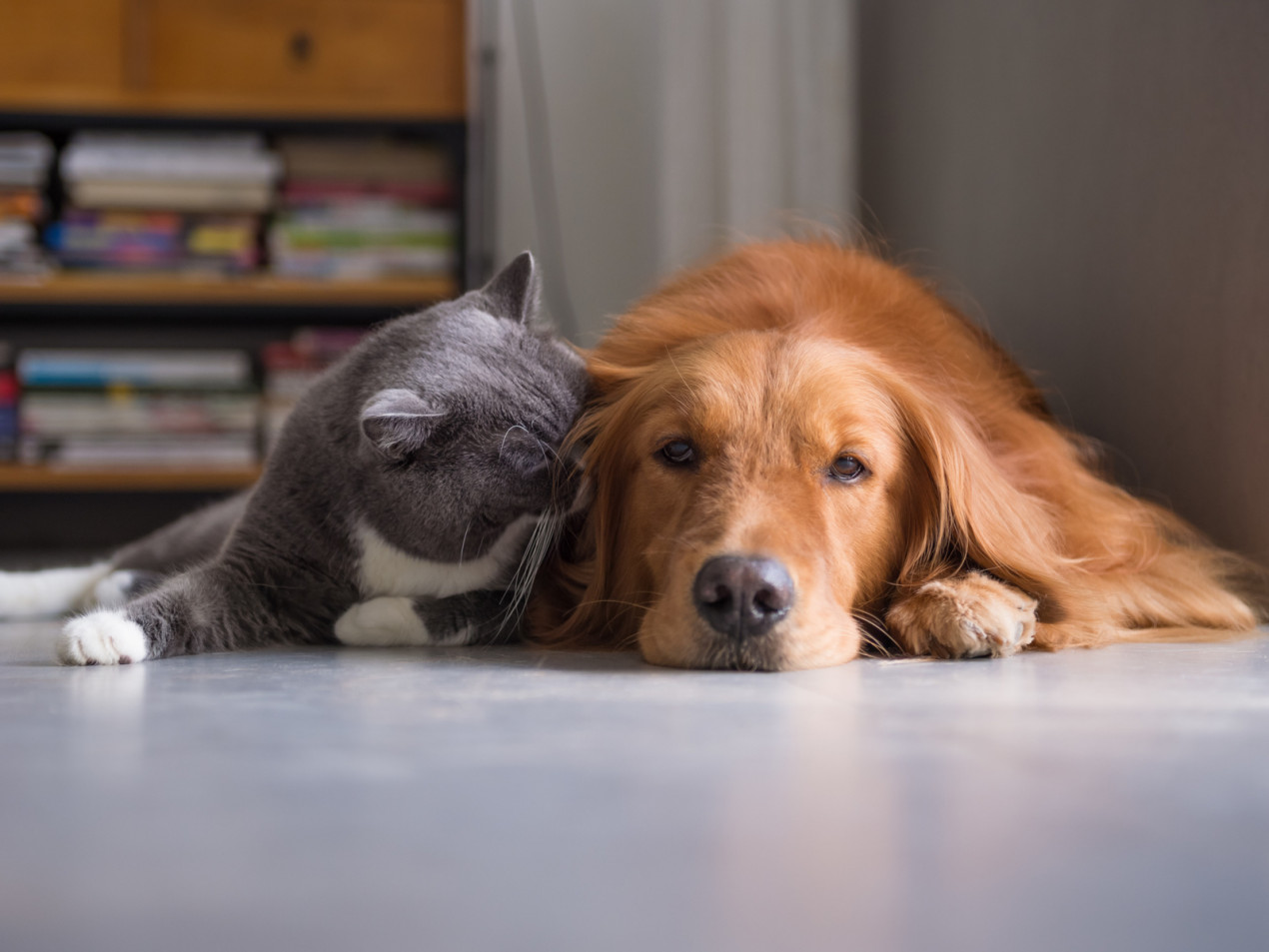
What is a pet emergency and when should you call an emergency vet?
At Vets Now, our mission is to be there for you and your pets when you need us most.
When you need advice and guidance, we’ve partnered with PawSquad to let you consult a vet from home, helping answer your questions and giving you peace of mind.
While we love being there to offer peace of mind wherever and whenever you need it, in some cases your pet’s condition could be life-threatening and they may need urgent treatment. If this happens, a video vet appointment would not be a suitable option and instead, you should contact a vet right away so your pet can be treated at a clinic.
During the day you should call your local vet and out of hours (at nights, weekends and any time your vet is closed) you can find your nearest Vets Now pet emergency clinic here.
These are just some of the conditions our vets deem to be potentially life-threatening:
1. Breathing difficulties
Signs of breathing problems may be obvious, such as choking, gasping and pawing at the throat. Or, they may be more subtle such as breathing through the mouth, increased abdominal movement when breathing, panting at rest or increased noise when breathing. Objects stuck in the airway, allergic reactions to stings, infections and injuries are all possible causes. Breathing problems can be immediately life-threatening in pets, so help should be sought immediately. Find out more about breathing difficulties in dogs and cats in our advice in-depth advice articles.
2. Open wound injuries
Heavy bleeding should always be considered an emergency and any bleeding that is a constant flow (especially if pulsing) or doesn’t stop in a few minutes also needs to be seen by a vet urgently. If you are able to safely do so, you can apply firm continuous pressure on the wound, using a clean cloth or towel, and raise it above the level of the patient’s heart, to slow the bleeding before getting to the vet.
3. Traumatic injuries
If your pet has been injured in a fall, from a window for example, or been hit by a car, they may have suffered serious internal injuries that aren’t immediately obvious. Many animals suffering from chest trauma may seem fine initially but can die later from severe bruising to the lungs. So do seek urgent veterinary help and advice.
4. Bloating in dogs
Bloating can be a sign of something called gastric dilation and volvulus, GDV, which is also known as torsion. It is a medical and surgical emergency which can be rapidly fatal if left untreated, but the good news is the survival rate of dogs who undergo emergency surgery after being diagnosed is as high as 80%. If you see your dog retching without bringing anything up, or only producing frothy mucus, or developing a swollen abdomen, get help immediately. Find out more about bloat in dogs here.
5. Failing to urinate
This can happen to any animal but is most common in male cats. If your pet can’t urinate it can lead to kidney failure, bladder rupture and death from internal poisoning. Signs can be confused with constipation, so if you see your male cat constantly straining in the litter tray or only producing spots of urine you should get urgent veterinary advice.
6. Seizing and fitting
Prolonged or frequent seizures can be deadly but regardless of whether your pet has had one fit or several, you should contact your vet or your nearest Vets Now urgently.

7. Poisoning
If you know your dog has eaten something poisonous – or even suspect it – call for help. Although many poisons can be counteracted with prompt action, waiting for symptoms to appear makes this harder and the chances of success drop rapidly.
8. Eye injuries
Although damage, infection or injury to the eyes is unlikely to be life-threatening, they can threaten your pet’s sight and have a profound impact on their lives, not to mention cause them pain and discomfort. Eye problems can progress very rapidly, so do not delay getting attention.
9. Repeated vomiting
It’s quite normal for animals – dogs in particular – to be sick every now and again, so this isn’t necessarily an emergency. But if your pet is repeatedly sick, is generally unwell, can’t keep water down, is vomiting blood, or also has diarrhoea, then you should get them checked just in case.
10. Birthing difficulties
Most dogs and cats give birth without any problem quite happily on their own. However, as a rule of thumb, female dogs shouldn’t go more than two hours between puppies, bleed a lot, or strain hard for more than 20 minutes without producing anything. It’s similar for female cats, although if they are straining non-productively for 20 minutes, consider it an emergency.
You might also be interested in:
11. Severe pain and anxiety
If your pet is showing signs of severe pain or anxiety, they may well be warning you of serious unseen internal problems. So, trust your pet’s warning signs and contact your vet.
12. Heatstroke
Heatstroke occurs when a pet can no longer regulate their own body temperature and keep it at a normal level. It is the result of overheating, for example when pets are left in a hot car or conservatory. Organ damage can happen very quickly as a result of heatstroke and sadly it can be fatal. But cooling them down too fast can actually make your pet worse, so always urgently seek your vet’s advice.
13. Near-drowning
If you pet has been pulled from water, make sure she’s checked by a vet as soon as possible. Animals, like humans, can suffer from secondary drowning where lung damage can cause them to die minutes, or even hours, after being brought from the water.

14. Inability to weight bear or move limbs
Although broken bones or paralysis may not be life-threatening on their own, your pet may be in pain and there may be other injuries that need checked out. Pets with such difficulties may need urgent treatment.
15. Collapse
Acute collapse in dogs may see your pet lose consciousness or they may remain conscious but seem anxious, confused or have a “glassy-eyed” appearance. If you pet collapses, even if they recover spontaneously, you should seek help from a vet straight away.
16. Rabbits not eating
Rabbits frequently hide signs of illness so behaviour such as loss of appetite or lack of faecal pellets, must be picked up right away. It may be a symptom of a common life-threatening condition called gut stasis. If you have concerns, contact your vet.
17. Swallowing hazards
Curious pets will occasionally swallow “foreign objects” such as toys, chicken bones, clothing or string. While some objects may be small enough to pass through their system without causing any problems others may get stuck and your pet could become seriously ill quite quickly. If your pet has swallowed something they shouldn’t have they may need urgent treatment, so always contact your vet.
18. Any illness or injury in pets younger than 2 weeks old
Pets that are less than two weeks old are extremely vulnerable to infections and other environmental factors and their health can deteriorate very quickly. If you are at all concerned about the health of such young animals, you should contact a vet right away as it’s vital that they get treatment as quickly as possible.
